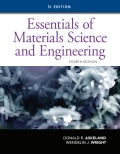
Interpretation:
The interplanar spacing, the length of the Burgers
Concept introduction:
The formula used is:
Here,
Answer to Problem 4.28P
The length of Burgers vector for slip system
The inter planar spacing for slip system of plane
The length of Burgers vector for slip systems
The inter planar spacing for slip system of plane
The ratio between the interplanar spacing and length of Burgers vector of the slip system
The ratio between the interplanar spacing and length of Burgers vector of the slip system
The ratio of shear stresses required for two slip systems is
Explanation of Solution
Plane:
The length of Burgers vector for slip system
Here,
The lattice parameter
Substitute
Hence, the length of Burgers vector for slip system
The inter planar spacing for slip system of plane
Here, Miller indices of adjacent planes are
Substituting
Hence, the inter planar spacing for slip system of plane
The length of Burgers vector for slip system
Here,
The lattice parameter
Substituting
Hence, the length of Burgers vector for slip systems
The inter planar spacing for slip system of plane
Here, Miller indices of adjacent planes are
Substituting
Hence, the inter planar spacing for slip system of plane
The ratio between the inter planar spacing and length of Burgers vector for slip system of
Substituting
The ratio between the inter planar spacing and length of Burgers vector for slip system of
Substitute
The ratio of shear stresses required for two slip system is calculated as:
Substituting
Hence, the ratio of shear stresses required for two slip systems is
The length of Burgers vector for slip system
The inter planar spacing for slip system of plane
The length of Burgers vector for slip systems
The inter planar spacing for slip system of plane
The ratio between the interplanar spacing and length of Burgers vector of the slip system
The ratio between the interplanar spacing and length of Burgers vector of the slip system
The ratio of shear stresses required for two slip systems is
Want to see more full solutions like this?
Chapter 4 Solutions
Essentials of Materials Science and Engineering, SI Edition
- Use the created table as in Question 1, solve the problems as mentioned below. You will have to import the respective CSV files of the above created tables as without them, it is impossible to solve the questions below. If you are not able to upload the files successfully, do not leave the query questions. Just write the query to the best of your knowledge. Do not copy. To be graded for the screenshot answer, you must upload the CSV properly and paste the resulting screenshot of the queries as asked. Look at the sum of profits for each Product Sub-Category. Which sub-category is $31,069 below the average profit across all categories? Write the Query in box below. [4 Marks] Paste the screenshot of a portion of the answer below. [1 Marks Write a query to find the contribution of total Sales by the 'Home Office' Customer Segment in the year 2012? For example, if in 2012, the total sum of sales across all Customer segments is 100 and 'Home Office' contributes 30 to the sum of sales. Then…arrow_forwardChoose the correct answer: 1- The stator core of a 3- phase induction motor is laminated in order to reduce the Eddy current loss ) Weight of the stator (B) Hysteresis loss (C) Both eddy current and hysteresis loss - In cumulatively cascade method for speed controlling of a 3-phase induction motor, if PA is the number of poles of main motor and P, is the number of poles of auxiliary motor. Then the speed of the motor B is given by Ⓐ120f/ PA + PB CO (B) 120f/PA-Ps (C) 120f/PA (D) 120f/ Ps 3-Direct online starter is used for 3- phase induction motors having capacity COOOO ⑭Ⓐ Less than 5 h.p. (B) Less than 10 h.p. (C) Greater than 10 h.p. (D) For any capacity motor 4-Crawling of a 3- phase induction motor is a phenomena mainly associated with (B) 5th harmonics Ⓒ) 7 th harmonics (D) 2nd harmonics (A) 3rd harmonics 5-Cogging in a 3- phase induction motor is caused --------- (Ⓐ) If the number of stator slots are equal to number of rotor slots (B) If the motor is running at fraction of its…arrow_forwardChoose the correct answer: 1-We avoid line starting of induction motor and use starter because... (A) It will run in reverse direction (B) It will pick up very high speed and may go out of step Motor takes five to seven times its full load current (D) Starting torque is very high 2-DOL starting of induction motors is usually restricted to........... A Low horsepower motors (D) High speed motors (B) Variable speed motors (C) High horsepower motors 3- The method which can be used for the speed control of induction motor from stator side is......... (A) V/f control (B) Controlling number of stator poles to control Ns (C) Adding rheostats in stator circuit All of these 4-In cumulatively cascade method for speed controlling, if PA is the number of poles of main motor and PB is the number of poles of auxiliary motor. Then the speed of the rotor B is given by 120f/PA + PB (B) 120f/PA-PB (C) 120f/PA 5-The crawling in the induction motor is caused by.............. (A) low voltage supply (B)…arrow_forward
- Where on the below beam is the Maxiumum Slope likely to occur? 120 Point A Point B Point C Point B or Point C B сarrow_forwardFor the picture attached below the parameters are the following: f1 = 400 Hz m(t) = sin(2 fmt), where fm = 300 Hz. Assume ideal LPFs with a cut-o frequency of f1. What would be the value of frequency f2 be so that the carrier frequency is 2.5kHz? What modification of this system is required to generate USSB (at the same carrier frequency)? ( Note: this does not involbe changing the oscillator frequencies)arrow_forwardDetermine (analytically) the signals at points A-Garrow_forward
- Solve without using alarrow_forwardThe following data show spot speeds collected at a section of highway located in a residential area before and after an increase in speed enforcement activities. (All speeds are in mi/h.) Before After Before After 44 27 34 21 38 36 35 21 36 23 32 37 41 40 26 26 36 40 38 33 28 32 41 23 32 27 31 24 38 31 36 23 33 22 36 26 44 35 29 23 36 27 31 20 33 18 38 22 40 25 31 26 39 31 33 32 38 33 41 35 Using the student's t-test, determine whether there was a statistically significant difference in the average speeds at a significance level of a = 0.05 (the 95-percent confidence level.) O Yes, there was a statistically significant difference in the average speeds. ○ No, there was not a statistically significant difference in the average speeds. Also report, for both the before and after cases, the mean speed, standard deviation, 85th-percentile speed, and percentage of traffic exceeding the posted speed limit of 30 mi/h. (Enter all speeds and standard deviations in mi/h. Round your 85th-percentile…arrow_forwardCalculate the BMs (bending moments) at all the joints of the beam shown in Fig.1 using the moment distribution method. The beam is subjected to an UDL of w=65m. L=4.5m L1= 1.8m. Assume the support at C is pinned, and A and B are roller supports. E = 200 GPa, I = 250x106 mm4.arrow_forward
- ||| = 1% 11. LTE2 Voi) Vol) 1. LTE1 SEARCH 8 VYT bartleby.com/dashboard ASK √x MATH SOLV affected resale value at year 5, would that affect perceived value-in-use? How exactly? There is an error in submission of question Check it out! See if this is the solution you're looking for VIEW FULL SOLUTION Not what you're looking for? Keep submitting your original question SUBMIT QUESTIONarrow_forwardNeed help with this in python!arrow_forward. The average soil weights for a clay are the following: 2,050 pounds in Loose CY, 2,675pounds in Bank CY, and 2,835 pounds in Compacted CY What is the swell percentage for theclay?arrow_forward
 MATLAB: An Introduction with ApplicationsEngineeringISBN:9781119256830Author:Amos GilatPublisher:John Wiley & Sons Inc
MATLAB: An Introduction with ApplicationsEngineeringISBN:9781119256830Author:Amos GilatPublisher:John Wiley & Sons Inc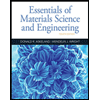 Essentials Of Materials Science And EngineeringEngineeringISBN:9781337385497Author:WRIGHT, Wendelin J.Publisher:Cengage,
Essentials Of Materials Science And EngineeringEngineeringISBN:9781337385497Author:WRIGHT, Wendelin J.Publisher:Cengage,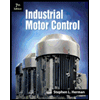 Industrial Motor ControlEngineeringISBN:9781133691808Author:Stephen HermanPublisher:Cengage Learning
Industrial Motor ControlEngineeringISBN:9781133691808Author:Stephen HermanPublisher:Cengage Learning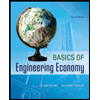 Basics Of Engineering EconomyEngineeringISBN:9780073376356Author:Leland Blank, Anthony TarquinPublisher:MCGRAW-HILL HIGHER EDUCATION
Basics Of Engineering EconomyEngineeringISBN:9780073376356Author:Leland Blank, Anthony TarquinPublisher:MCGRAW-HILL HIGHER EDUCATION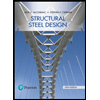 Structural Steel Design (6th Edition)EngineeringISBN:9780134589657Author:Jack C. McCormac, Stephen F. CsernakPublisher:PEARSON
Structural Steel Design (6th Edition)EngineeringISBN:9780134589657Author:Jack C. McCormac, Stephen F. CsernakPublisher:PEARSON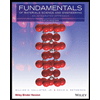 Fundamentals of Materials Science and Engineering...EngineeringISBN:9781119175483Author:William D. Callister Jr., David G. RethwischPublisher:WILEY
Fundamentals of Materials Science and Engineering...EngineeringISBN:9781119175483Author:William D. Callister Jr., David G. RethwischPublisher:WILEY





